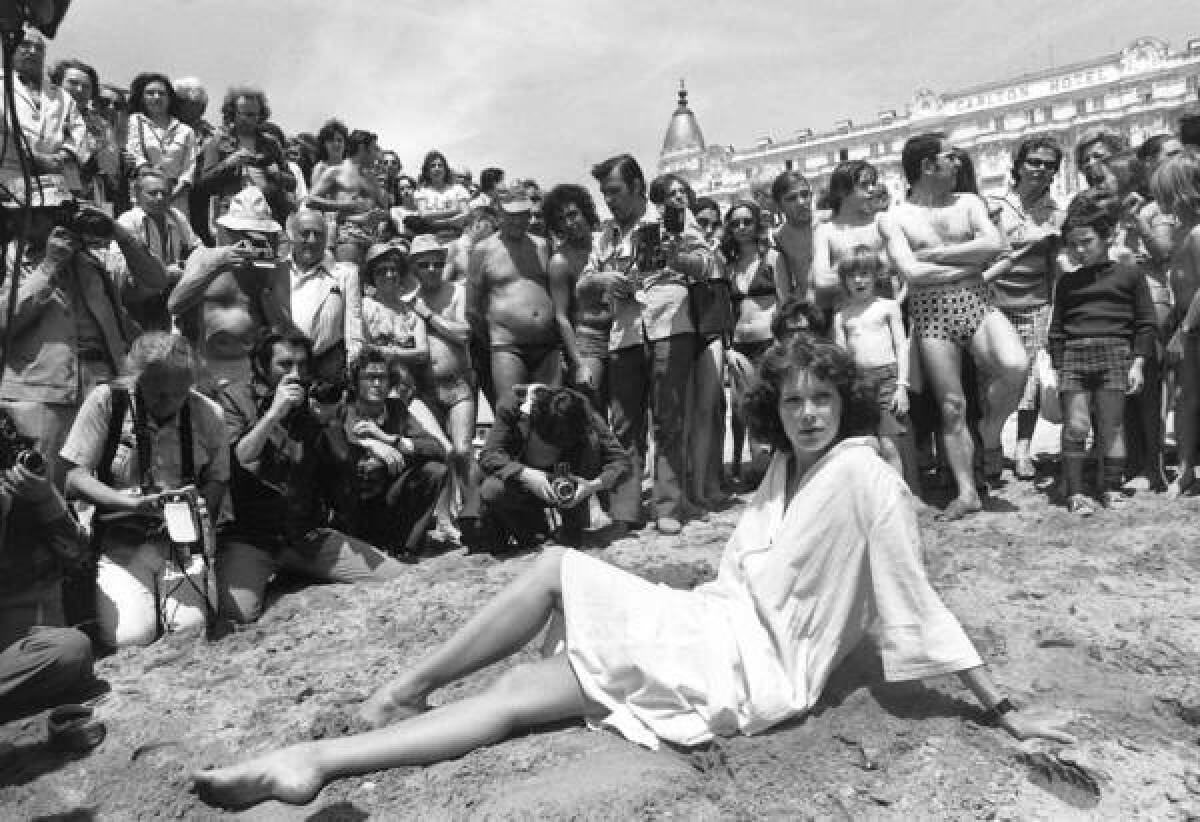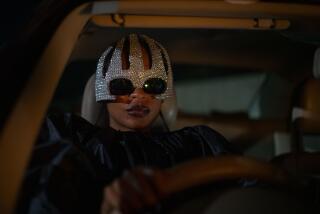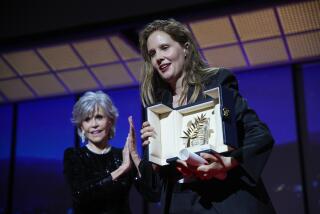Cannes keeps being film industry’s place to be

- Share via
CANNES, France — — It’s been 42 years since I first covered the Cannes Film Festival. Arriving on the French Riviera this week, I was struck by how Cannes has remained the quintessential place for film, despite enormous changes in the cinema landscape.
Cannes was more casual back in 1971, of course. You could hang out with Italian director Luchino Visconti without much planning or go see Jack Nicholson in his hotel room and spend the afternoon discussing his first directorial effort, “Drive, He Said,” with no more preamble than running into a friend of his on the street. There was no “French day,” the interview period now set aside so French journalists can get their stories before everyone else.
And many things were simpler. Though it sounds paradoxical, even getting stories back to my newspaper — it was the Washington Post in those days — was less time-consuming in that pre-computer age. The festival headquarters had a room where telex operators — invariably burly cigar-smoking men who spoke not a word of English — took your typewritten copy, grunted something unintelligible and transmitted it to the U.S. without a hitch. If only things were that easy today.
Yet even back then, Cannes seemed enormous. The packed throngs on the street, I recall, included an elderly man ringing a cowbell and insisting in French, “Always the same films, always the same circus. Pollution, mental and physical pollution. Nothing, nothing, nothing.”
When I met Visconti that year and expressed uneasiness at how crowded Cannes was and how much there was to see, though, the great man looked at me like I was from another planet. “It is cinema, cinema, cinema all day long,” he said, setting me straight while flashing a pair of vivid argyle socks that I remember to this day. “I love it.”
Since then, Cannes has only gotten bigger. Though we now live in an age when films can be viewed via links on computers anywhere in the world, the number of journalists covering this maddening 12-day affair has multiplied by five in the last four decades, to nearly 4,000. Unlike other festivals, which cater to the public as well as industry types, Cannes is aimed at professionals, and some 27,000 are expected for this year’s edition, which starts Wednesday.
It’s remarkable to me that Cannes, now in its 66th year, has managed to maintain its position as the world’s preeminent film event. Yes, it has been nimble. Mostly, though, it has done this not by changing — but by becoming more itself. And by being willing to spend the money needed to get the job done.
Cannes got off the ground after World War II. As it was coming into its adulthood, a key challenge came courtesy of the anti-establishment upheavals of 1968, which shook all of France. French New Wave directors such as Francois Truffaut and Jean-Luc Godard physically hung from the curtains in front of the main screen, demanding and achieving the cancellation of the festival at its midway point.
Those events led to the 1969 founding of a rival event, the Quinzaine des Realisateurs, or Directors’ Fortnight, which made it a point of pride to show edgier, less stodgy fare than the main festival. How did Cannes react? It took a while, but in 1978 the festival under Gilles Jacob decided to go big and found its own sidebar event, Un Certain Regard, to provide a home for exactly those kinds of films, with the festival imprimatur as an added bonus.
CHEAT SHEET: Cannes Film Festival 2013
The festival also responded to the advent of home video technology, including VCRs, DVDs and Blu-ray. As those new formats drove interest in older films and both French and American distributors wanted a platform to publicize their plans to re-release classics, the festival under Thierry Frémaux rapidly expanded its Cannes Classics section. In fact, a Cannes Classics screening and event centering on the 50th anniversary of “Cleopatra” looks to be one of this year’s hottest tickets.
Cannes is not just a festival that screens rarefied films. It also hosts a major market, known officially as the Marche du Film, where last year about 4,000 films were shown to buyers from more than 100 countries. Here, deals are cut to bring movies to theaters in countries around the world or to release them on video or in digital formats. All kinds of bizarre features get shown — “Attack of the Giant Moussaka” from about a decade ago is a personal favorite — and all kinds of strange events take place. In 1976, I took a small boat out to a cruise ship where everyone was encouraged to follow Greek tradition and break as many plates as possible to help promote “The Greek Tycoon.” Did it work? No man can say.
As the Marche grew larger and people complained about lack of space, the festival added not one but two large purpose-built buildings, poetically named Espace Riviera and Espace Lerins, as well as an expansive tent village, to keep everyone happy.
This kind of willingness and ability to literally pay the price to keep the festival relevant is a through-line in Cannes’ response to challenges. The event’s annual budget is a staggering 20 million euros, roughly $26 million, and half of that comes from governmental tax funds. The French public considers film to be part of its cultural patrimony and is quite willing to foot the bill to be the best.
Part of that money goes to making the city as pleasant as it can be for festival visitors. Two months before the event begins, flowers get planted so they will bloom on schedule. One of the treats of getting to Cannes early is watching enormous cranes place huge, blossom-filled concrete planters into strategic positions along the Riviera.
Given how easy it is to see films these days without leaving your room, why do people continue to spend such considerable time, energy and money to go to Cannes?
Because, despite the billions of dollars involved, the movie business remains a personal one, where relationships count and seeing people face to face from time to time is essential. Cannes has made sure that there’s no place better to do that than Cannes. What was true in 1971 is still true today: Everyone goes to Cannes because everyone else is there. No other place can make that claim, not even close.
More to Read
Only good movies
Get the Indie Focus newsletter, Mark Olsen's weekly guide to the world of cinema.
You may occasionally receive promotional content from the Los Angeles Times.











